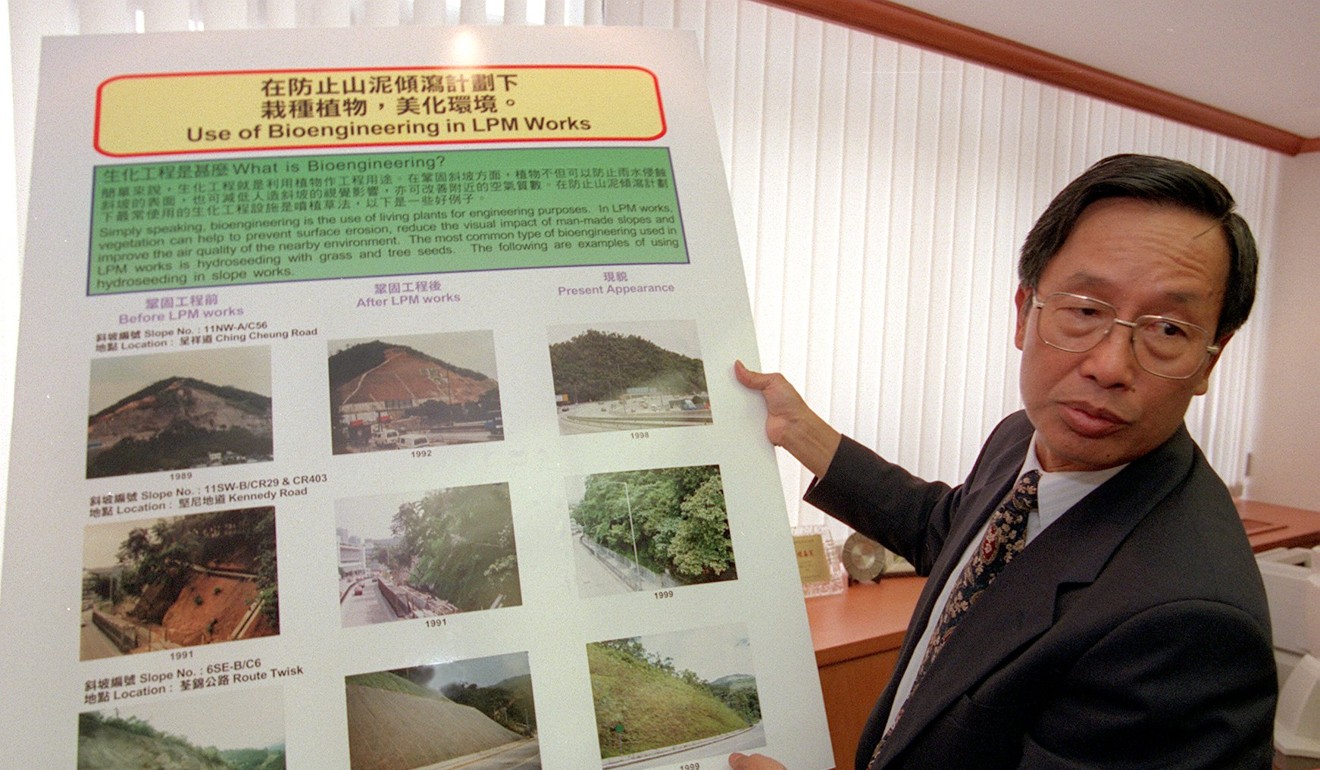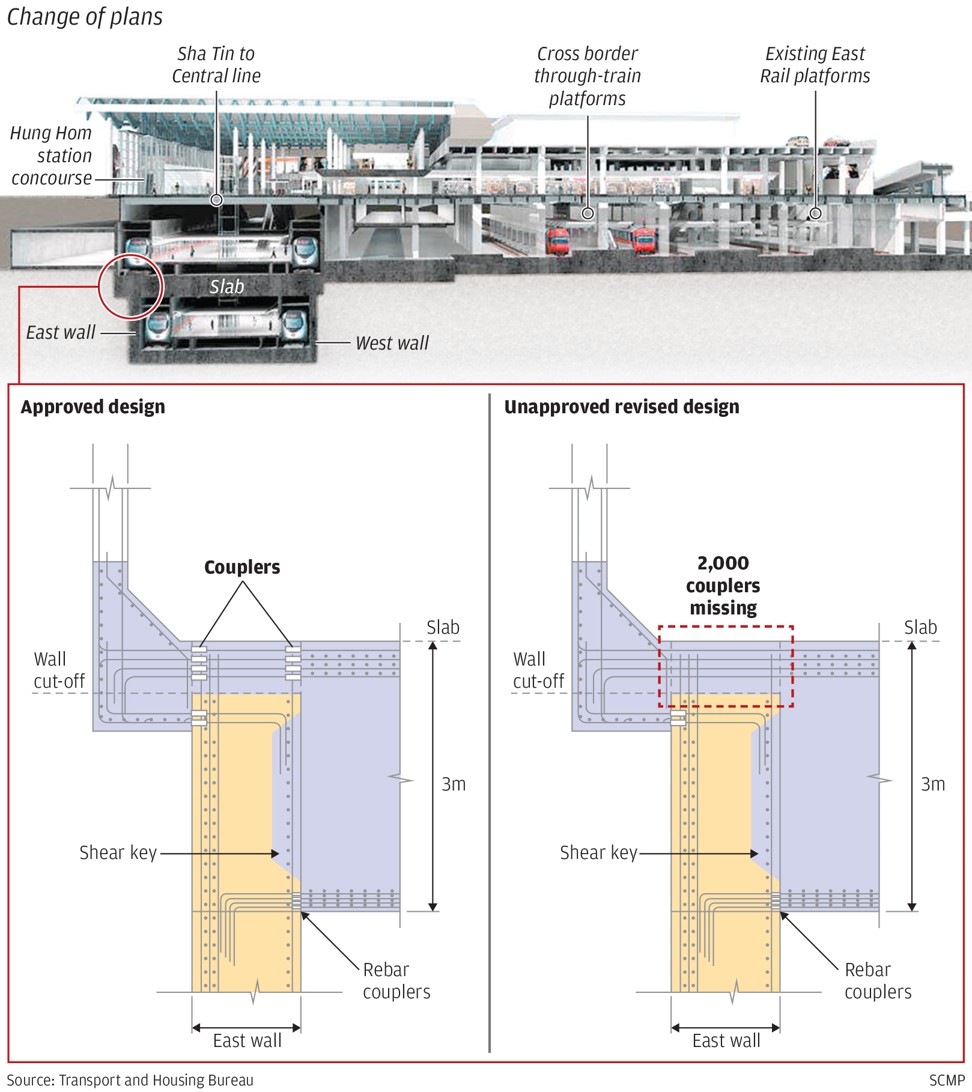
MTR Corp troubleshooter wants to tear up platform at Hong Kong station to restore public confidence in HK$97.1 billion rail link
Lau Ching-kwong, the former director of the Civil Engineering Department, is one of three experts to be parachuted into troubled rail operator on government’s behalf
“Seeing is believing, so I will call for breaking up the part [of the platform] in question,” said Lau Ching-kwong, the former director of the Civil Engineering Department.

This is despite Secretary for Transport and Housing Frank Chan Fan saying earlier that the move was not necessary.
Lau entered the government in 1966 as an assistant engineer and rose to the rank of director of the Civil Engineering Department in 2000, before retiring in late 2002.
Troubled MTR Corp’s profits drop 20.5 per cent to HK$4.64 billion
The government, which owns 75 per cent of the company, said on Tuesday it had lost faith in the management of the project and demanded those in charge be removed.
MTR’s HK$97.1 billion link scandal: consequences, loopholes and solutions
While the rail firm has scheduled a safety loading test for the platform in question, Lau said it would not be enough to restore the public’s confidence.
“Under such circumstances, I believe no one will accept this,” he said on a radio programme on Thursday.
Lau called for an opening of concrete about 1 metre thick so he could check the steel bars and the couplers that connect them.
An alternative to see the extent of the problem would be to use “ultrasonic” equipment, Lau said, although he believes it would be better to physically inspect the steel bars.
But Leong said he was told by other experts that a loading test would be most suitable, adding the firm will continue to listen to different views.
“At the end of the day, the government has to approve the testing methodology,” he said.
Lam said on Tuesday that another group of engineering experts, including Peter Hansford and consultancy firm CM Wong, would decide what tests should be conducted to ensure the platform’s safety.
MTR Corp said the contractor of the Hung Hom project, Leighton Contractors (Asia), had modified the design without alerting the government, and the rail firm’s inspectors on site failed to tell Leighton to do so.
This resulted in 2,000 couplers not being installed on the platform. MTR Corp said the design had to be revised because of difficulties in the construction process.
Rail operator MTR Corp reveals 64 sites in being monitored for subsidence
Lau said he agreed with the rail firm that the changed design was better than the original, but added the contractor should have sought government approval for such a major change.
On the duty of the consultant group, Lau said the aim was to restore the public’s confidence in the project.
Lau, however, admitted not knowing what level of authority the experts would have, saying the invitation had only come on Tuesday and the group had not yet had its first meeting.
He expected the work would involve work site visits and reviewing contracts.
Greg Wong Chak-yan, former president of Hong Kong Institution of Engineers, said there were questions over where exactly steel bars were trimmed and which parts of the slab involved substandard work.
“It is difficult to decide where to start in tearing open the concrete for inspection,” Wong said on the same radio programme.
Fresh MTR Corp investigation shunted into siding by Hong Kong lawmakers
Engineer Ngai Hok-yan said the biggest concern was whether the finished slab and diaphragm walls were really built according to design specifications.
He said the railway work was exempted from parts of the Building Ordinance, for example, which meant it had a trump card in revising designs or drawings.
“But, it still has to inform the Buildings Department of any changes before obtaining any occupation permits,” he noted.
On Thursday afternoon, Leong said the commencement of the troubled section of the Sha Tin to Central rail link will depend on the results of the platform safety test, and hinted it could be delayed.
Before it was revealed that 2,000 couplers had been missing from a diaphragm wall on Tuesday, the firm said it was hoping to begin the section in mid-2019.


